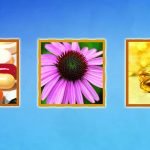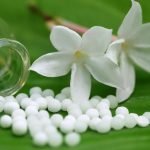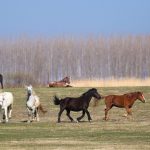Antifungals: A Prudent Perspective – Part 2
Lauren Tessier, ND
As discussed in the last installment of this article, there are numerous concerns with employing antifungals, including the growing issue of antifungal resistance and the complexities of how and when to use them appropriately. Part 1 of this article laid the foundation for a discussion regarding the process of choosing a suitable antifungal, as well as how to optimize its efficacy.
Can Testing Help or Hinder Antifungal Choice?
Choosing an antifungal is not as easy as it is made out to be and can be as complex as you wish it to be. There are numerous clinical considerations to take into account when employing an antifungal: location of colonization/infection, the type of fungus, and resistance patterns.
Being aware of location of the infection (or colonization) is important, as proper medication delivery can make or break a case. Fungi can inoculate the sinuses, skin, lungs, GI tract (mouth to anus), and urogenital tract. Information about localized complaints, such as facial pain, discharge, GI issues, skin rashes, discolored sputum, shortness of breath, and cough, can all point to localization. Similarly, imaging and culturing may also help inform localization. For instance, “fungal balls,” or mycetomas, may be seen in the hollow cavities of the body (eg, sinuses, urinary tract, etc) via CT or MRI.1,2 Moreover, invasive aspergillosis may appear on chest X-ray or CT as a ground-glass opacity or a nodule surrounded by a ground-glass halo.3-6 As a cautious aside, other pathologies may demonstrate the ground-glass appearance; therefore, if such a finding is found, the patient should ideally be appropriately directed to pulmonology and infectious disease for adjunctive care. Culturing of skin scrapings, sputum, stool, and urine not only allows for identification, but also localization. Keep in mind, when ordering a culture, it is imperative to be clear that a fungal culture is being requested. Fungal cultures can produce false negatives for numerous reasons, including inadequate sampling, incorrect growth medium, short growing duration, incorrect temperature, and general lack of lab awareness for fungal identification. In cases where a false negative is suspected, a histopathological sample may be of benefit7-8; however, it is not a fail-proof method for fungal pathogen identification.9-10 In some cases, PCR may be helpful for identification, although it is not applicable to all molds, and may not be available in all areas.
As for susceptibility testing, there are various types of lab methodologies that are used to determine resistance patterns, which may vary from lab to lab. Some labs are unable to test susceptibility of molds and are only able to test susceptibility of yeasts, while other labs limit their susceptibility testing to a handful of specific antifungals.
In some cases, serology testing may help to inform a case, so long as the physician is aware of its limitations. Not unlike like other serology testing, patients who struggle with immune compromise, deficiency, or dysregulation, may be unable to produce reliable levels of antibodies required to make an assessment. Moreover, antibody testing for individual molds has limitations in its sensitivity and specificity, as cross-reactivity to other fungi is possible. Moreover, IgM and IgG testing may not be available for the specific species in question. To further confound (or potentially enhance) IgM and IgG results, research has demonstrated that simple exposure alone, not just infection, can cause species-specific elevations in IgM, IgG, and IgA.11-13
Direct antigen testing may also be used to inform antifungal choice by means of narrowing the potential antigenic field. β-D-glucan, galactomannan, and glycoprotein assays are available through most large labs and are used primarily in the detection of life-threatening Candida and Aspergillus infections, but they also can be used in the diagnosis of Histoplasma, Pneumocystis, and Cryptococcus infections. These tests can analyze various types of samples, including serum, bronchial alveolar lavage, urine, etc. The biggest problem with these assays is that they suffer a wide-ranging sensitivity and specificity, depending on the study employing them.14-15
An exciting up-and-coming test centers around the identification of fungal-reactive T-cells. This minimally invasive test, although still considered investigational, may offer more diagnostic information, especially in the face of other negative laboratory findings.16-18 However, similar to serology testing, simple exposure to environmental molds is capable of producing activated T-cells in the absence of demonstrable infection.19
Finally, urine mycotoxin testing may be potentially helpful in identifying the mold for which one should be tested for antifungal consideration. For instance, literature demonstrates that gliotoxin is not only produced by Aspergillus fumigatus,20 but also by A terrus, A niger, and A flavus21 and by certain strains of Candida albicans.22-24 There is, however, the possibility that some yet-to-be-identified molds also produce specific mycotoxins. So, while urine mycotoxin testing is not fool-proof, it can still provide clues that help to inform a case.
A similar logic may be applied to known environmental exposure. Environmental testing using MSQPCR technology can identify fungal species in a living space, whereas air testing typically only identifies genus (due to limitations in methodology). Therefore, the highly specific data from an Environmental Relative Moldiness Index (ERMI) – which utilizes MSQPCR – of a client’s living space can help to inform a case. Let’s say you have a patient with a known exposure to Aspergillus fumigatus, as demonstrated by an ERMI. This result, paired with an elevated urine gliotoxin level, may warrant an Aspergillus fumigatus-specific work-up to help inform antifungal utility.
As one can infer, no single test is perfect; however, much can be obtained if the clinician truly understands information that a laboratory test is providing.
Types of Antifungals
Once you are aware of a patient’s specific environmental exposure, and perchance you have a lead on internal exposure by serology, culture, antigen detection, PCR, or otherwise, it is important to also assess for preexisting conditions of the liver and kidneys so that pathologies may be identified in advance and be monitored appropriately during the course of treatment. Once the aforementioned data points have been collected, it is time to match the case to an appropriate drug and delivery method. Drug delivery options can be systemic (oral or IV), topical (internal or external), intranasal, or nebulized. However, one must keep in mind that not all antifungals are safe or effective in all delivery methods.
There are 7 major classes of antifungals: azoles, polyenes, echinocandins, fluorinated pyrimidine, griseofulvin, morpholines, and allylamines.25 Systemic diseases are typically clinically treated with azoles, echinocandins, and polyenes, while superficial diseases can be addressed by morpholines, griseofulvin, and allylamine, in addition to the polyenes and azoles.25
The well-known fungistatic azole class of drugs interferes with the synthesis of ergosterol, an integral part of the fungal cell membrane, by inhibiting a fungal CYP450 enzyme that is responsible for its production.26-27 The azoles include the initially created subclass, imidazoles, which consist of clotrimazole, ketoconazole, and miconazole; these are most active for Candida, Cryptococcus, and dermatophytes.27,28 However, these drugs have been noted to have numerous side effects and drug-drug interactions due to their impact on the CPY450 pathway. In response to this, the first generation of the triazole subclass was developed, which initially included fluconazole and itraconazole. These medications offered a wider spectrum of activity, but ultimately failed in the treatment against Fusarium and Mucorales molds.29,30 Fluconazole, while widely used against species of Candida, Coccidioides, Cryptococcus, Histoplasma, and Blastomyces, is simply ineffective against molds.31-32 This is perhaps the most important clinical pearl in this entire discussion: Fluconazole does not have as extensive of a spectra as many assume, and therefore suffers many failures despite being widely used in the clinical setting for presumptive treatment. Meanwhile, the other first-generation triazole, itraconazole, is active against not only yeasts, but also some Aspergillus species.33-34 Compared to earlier iterations of azoles, the second generation of triazoles – voriconazole and posaconazole – are fungicidal35 and provide a wider spectrum of activity against filamentous fungi,36-37 a property only provided by amphotericin B38 prior to their invention nearly 20 years ago. The newest triazole, isavuconazole, has one of the widest spectra, as it is effective against Aspergillus, Cunninghamella, Rhizopus, and Mucor species of fungi.35
The polyene class of medications was the first class of antifungals, as made popular by amphotericin B; other polyenes include natamycin and nystatin. These drugs cause a disruption of the fungal cell membrane by means of pore formation, and are thus fungicidal in nature.39-45 They are considered broad-spectrum, as they are efficacious against most Aspergillus, Candida, Mucor, and dimorphic fungi, with considerably low rates of resistance.46-49 Amphotericin B is the most widely utilized polyene for systemic mycoses in its IV form. While highly efficacious, original formulations were also very toxic, resulting in infusion reactions, electrolyte imbalances, and renal and hepatic toxicity26,50 – hence its nickname “ampho-terrible.” Having been improved upon at the end of the last century, the lipid-based reformulation is now less renal-toxic than the previous iteration.48,51 Generally speaking, natamycin and nystatin are topically used, as they are not formulated to enter the bloodstream, thus their use in the treatment of fungal overgrowth or infection of the mouth, esophagus, GI tract, vagina, cornea, and skin.46
The echinocandins, a relatively new class of antifungals, consist of anidulafungin, caspofungin, and micafungin.38,52 These drugs inhibit the production of the polysaccharide β-1,3 glucan, which is integral to the health and functionality of the fungal cell wall.53 This medication class is effective against Candida and Aspergillus species,54-60 and is considered fungicidal and fungistatic,61 respectively. However, echinocandins are not effective against Cryptococcus, Fusarium, and Mucoraceae fungi.62-64 These drugs are typically delivered intravenously and are reserved for more serious invasive infections; however, they have poor penetrance into the central nervous system.65,66 In general, they demonstrate minimal drug-drug interactions, as well as minimal side effects, which include headache, infusion reaction, GI upset, and altered liver enzymes.55,56,66 Due to their general tolerability and efficacy, they have been called the “penicillin of antifungals.”67
Griseofulvin, allylamines (eg, naftifine and terbinafine), and morpholines (eg, amorolfine) are all effective topically against dermatophytes.25 Amorolfine also addresses Malassezia,68,69 while all of the above demonstrate efficacy against species of Candida.70-72 Terbinafine is also available in oral preparations,72 as it is able to be absorbed and delivered systemically by the bloodstream. It demonstrates efficacy against Aspergillus, Fusarium34,73 and other dimorphic fungi,72 as well as some dematiaceous fungi.74
Flucytosine, also known as 5-fluorocytosine of 5-FC is the only drug in the class of fluorinated pyrimidines that is used as an oral antifungal; as such, it interferes with nucleic acid synthesis and thus fungal protein synthesis.75 While this drug is active against some Cryptococcus and Candida species,38,76-79 it has little to no action against filamentous or dimorphic fungal species.63,80 Unfortunately, the efficacy of this particular drug is limited due to continually growing resistance when used as the only treatment agent,81-82; as such, it is now largely used in conjunction with other antifungal agents.77-79 Caution is required, as it may cause drug-drug interactions,38 liver toxicity, and bone marrow suppression.83 This particular medication may be useful for urinary system indications, as the medication is mostly excreted by the kidneys in a largely unmetabolized form.83 That said, careful attention should be paid to cases with renal insufficiency, wherein therapeutic drug monitoring should be considered.
As you can imagine from the above discussion, having a grasp of what fungi are in play can have a large impact on your choice of antifungal, and thus treatment outcome.
Maximizing Effectiveness
There are numerous ways you can maximize effectiveness of antifungal treatment.
Research has demonstrated that fungi occur naturally throughout the body, creating what we call the mycobiome,84-89 and that some of these fungi, including Aspergillus, Candida, and even Zygomycetes, produce biofilms85-101 which – like bacterial biofilms – may be capable of adding to their overall resistance.93,102-111
Certain drugs have mixed efficacy against various biofilms. Generally speaking, drugs in the azole class have poor activity against Candida biofilms,93,103,105-111 whereas caspofungin, micafungin, anidulafungin, and amphotericin B have demonstrated some efficacy against Candida biofilms.93,105,107,109-118 Therefore, agents active against biofilms should be considered as adjunctive treatment. This includes the aforementioned drugs, and also the various biofilm busters we have all come to know.
When we create a void in our natural flora, it is advantageous to fill that space with something beneficial that will act as a niche competition. Therefore, it is not uncommon to use probiotics when using antifungals. Some may opt to seed the niche with beneficial yeast such as Saccharomyces boulardii, which has been shown to mitigate the ill effects of ochratoxin119 and deoxinyvanol120-122 exposure in animals. However, some may decline to do so due to concerns about cross-reactivity and lack of control over studied vs commercially available strains.
Another way to help maximize effectiveness is being aware of the metabolism and mechanism of action of the medication you are using. As you are aware, many things impact drug kinetics, and thanks to analysis of single nucleotide polymorphisms (SNPs), we may be able to anticipate that a patient might have a higher likelihood of altered drug metabolism. As a result, it may be of benefit to review SNP analysis of patients prior to choosing an antifungal, as doing so may identify unexpected cases of necessary therapeutic drug monitoring. Additionally, keep in mind that natural products have the ability to modify the very CYP pathways that metabolize these medications. Therefore, it is always of benefit to reference drug-herb or drug-nutrient interactions, as these too may impact therapeutic drug levels.
SNP discussion aside, there is additional in-vitro research available discussing the impact of natural products on drug efficacy. For instance, there are numerous studies demonstrating the enhanced effect of amphotericin B when combined with essential oils of Cinnamomum cassia,123 Thymus vulgaris,124 Myrtus communis,125 and Coriandrum sativum.126 However, as these are in-vitro studies rather than in-vivo, one should tread cautiously in their translation to clinical application, as they too may modify metabolic pathways.
Why You Shouldn’t Fear Antifungals
While most of this 2-part piece proposes methodical and cautious decision-making in using antifungals, one should not be scared or dissuaded in doing so. There is a time and place for everything and, in some cases, antifungals may be the best course of action. In naturopathic medicine there is the concept of matching the level of interventions to the illness. If a client is clearly suffering from a problematic fungal infection, the best-match intervention may in fact be an antifungal drug. Moreover, an antifungal medication may be preferentially used in cases where treatment resistance to other antifungal classes or herbs has occurred, or potentially when insurance coverage for medications is a realistic part of the discussion. Finally, in quite a few cases, I have turned to pharmaceutical antifungals instead of antifungal herbs and nutraceuticals, as I have found that in most cases they work faster than herbs and, for some, are better tolerated.
References:
- Cardesa A, Alos L, Nadal A, Franchi A. Nasal Cavity and Paranasal Sinuses. Pathology of the Head and Neck. 2017;49-127. Available at: https://www.ncbi.nlm.nih.gov/pmc/articles/PMC7121685/. Accessed August 15, 2020.
- Di Paola G, Mogorovich A, Fiorini G, et al. Candida bezoars with urinary tract obstruction in two women without immunocompromising conditions. ScientificWorldJournal. 2011;11:1168-1172.
- De Pauw B, Walsh TJ, Donnelly JP, et al. European Organization for Research and Treatment of Cancer/Invasive Fungal Infections Cooperative Group; National Institute of Allergy and Infectious Diseases Mycoses Study Group (EORTC/MSG) Consensus Group. Revised definitions of invasive fungal disease from the European Organization for Research and Treatment of Cancer/Invasive Fungal Infections Cooperative Group and the National Institute of Allergy and Infectious Diseases Mycoses Study Group (EORTC/MSG) Consensus Group. Clin Infect Dis. 2008;46(12):1813-1821.
- Di Mango AL, Zanetti G, Penha D, et al. Endemic pulmonary fungal diseases in immunocompetent patients: an emphasis on thoracic imaging. Expert Rev Respir Med. 2019;13(3):263-277.
- Franquet T, Giménez A, Hidalgo A. Imaging of opportunistic fungal infections in immunocompromised patient. Eur J Radiol. 2004;51(2):130-138.
- Torres PPTES, Rabahi MF, Moreira MAC, et al. Tomographic assessment of thoracic fungal diseases: a pattern and signs approach. Radiol Bras. 2018;51(5):313-321.
- Romano C, Maritati E, Gianni C. Tinea incognito in Italy: a 15-year survey. Mycoses. 2006;49(5):383-387.
- Odom RB, James WD, Berger TG. Andrew’s Diseases of the Skin: Clinical Dermatology. 9th ed. Philadelphia, PA: W.B. Saunders; 2000: 369-370.
- Cornely OA, Cuenca‐Estrella M, Meis JF, Ullmann AJ. European Society of Clinical Microbiology and Infectious Diseases (ESCMID) Fungal Infection Study Group (EFISG) and European Confederation of Medical Mycology (ECMM) 2013 joint guidelines on diagnosis and management of rare and emerging fungal diseases. Clin Microbiol Infect. 2014;20 Suppl 3:1‐4.
- Ostrosky‐Zeichner L. Invasive mycoses: diagnostic challenges. Am J Med. 2012;125(1 Suppl):S14‐S24.
- Vojdani A, Thrasher JD, Madison RA, et al. Antibodies to molds and satratoxin in individuals exposed in water-damaged buildings. Arch Environ Health. 2003;58(7):421-432.
- Vojdani A, Kashanian A, Vojdani E, Campbell AW. Saliva secretory IgA antibodies against molds and mycotoxins in patients exposed to toxigenic fungi. Immunopharmacol Immunotoxicol. 2003;25(4):595-614.
- Vojdani A, Campbell AW, Kashanian A, Vojdani E. Antibodies against molds and mycotoxins following exposure to toxigenic fungi in a water-damaged building. Arch Environ Health. 2003;58(6):324-336.
- Theel ES, Doern CD. β-D-glucan testing is important for diagnosis of invasive fungal infections. J Clin Microbiol. 2013;51(11):3478-3483.
- Hachem RY, Kontoyiannis DP, Chemaly RF, et al. Utility of galactomannan enzyme immunoassay and (1,3) beta-D-glucan in diagnosis of invasive fungal infections: low sensitivity for Aspergillus fumigatus infection in hematologic malignancy patients. J Clin Microbiol. 2009;47(1):129-133.
- Bacher P, Steinbach A, Kniemeyer O, et al. Fungus‐specific CD4(+) T cells for rapid identification of invasive pulmonary mold infection. Am J Respir Crit Care Med. 2015;191(3):348‐352.
- Steinbach A, Cornely OA, Wisplinghoff H, et al. Mould-reactive T cells for the diagnosis of invasive mould infection–A prospective study. Mycoses. 2019;62(7):562-569.
- Koehler FC, Cornely OA, Wisplinghoff H, et al. Candida-Reactive T Cells for the Diagnosis of Invasive Candida Infection–A Prospective Pilot Study. Front Microbiol. 2018;9:1381.
- Wurster S, Weis P, Page L, et al. Intra- and inter-individual variability of Aspergillus fumigatus reactive T-cell frequencies in healthy volunteers in dependency of mould exposure in residential and working environment. Mycoses. 2017;60(10):668-675.
- Kwon-Chung KJ, Sugui JA. What do we know about the role of gliotoxin in the pathobiology of Aspergillus fumigatus? Med Mycol. 2009;47 Suppl 1(Suppl 1):S97-S103.
- Lewis RE, Wiederhold NP, Lionakis MS, et al. Frequency and species distribution of gliotoxin-producing Aspergillus isolates recovered from patients at a tertiary-care cancer center. J Clin Microbiol. 2005;43(12):6120-6122.
- Bertling A, Niemann S, Uekötter A, et al. Candida albicans and its metabolite gliotoxin inhibit platelet function via interaction with thiols. Thromb Haemost. 2010;104(2):270-278.
- Shah DT, Glover DD, Larsen B. In situ mycotoxin production by Candida albicans in women with vaginitis. Gynecol Obstet Invest. 1995;39(1):67-69.
- Shah DT, Jackman S, Engle J, Larsen B. Effect of gliotoxin on human polymorphonuclear neutrophils. Infect Dis Obstet Gynecol. 1998;6(4):168-175.
- Campoy S, Adrio JL. Antifungals. Biochem Pharmacol. 2017;133:86-96.
- Odds FC, Brown AJ, Gow NA. Antifungal agents: mechanisms of action. Trends Microbiol. 2003;11(6):272-279.
- Shukla PK, Singh P, Yadav RK, et al. Past, present and future of antifungal drug development. Top Med Chem. 2016;29:125-167.
- Morita T, Nozawa Y. Effects of antifungal agents on ergosterol biosynthesis in Candida albicans and Trichophyton mentagrophytes: differential inhibitory sites of naphthiomate and miconazole. J Invest Dermatol.1985;85(5):434-437.
- Castelli MV, Butassi E, Monteiro MC, et al. Novel antifungal agents: a patent review (2011 – present). Expert Opin Ther Pat. 2014;24(3):323-338.
- Vandeputte P, Ferrari S, Coste AT. Antifungal resistance and new strategies to control fungal infections. Int J Microbiol. 2012;2012:713687.
- Pardasani A. Oral antifungal agents used in dermatology. Curr Probl Dermatol. 2000;12(6):270.
- Pappas PG, Rex JH, Sobel JD, et al. Guidelines for treatment of candidiasis. Clin Infect Dis. 2004;38(2):161-189.
- Denning DW, Hope WW. Therapy for fungal diseases: opportunities and priorities. Trends Microbiol. 2010;18(5):195-204.
- Andriole VT. Current and future antifungal therapy: new targets for antifungal therapy. Int J Antimicrob Agents. 2000;16(3):317-321.
- Peyton LR, Gallagher S, Hashemzadeh M. Triazole antifungals: a review. Drugs Today (Barc). 2015;51(12):705-718.
- Johnson LB, Kauffman CA. Voriconazole: a new triazole antifungal agent. Clin Infect Dis. 2003;36(5):630-637.
- Nagappan V, Deresinski S. Reviews of anti-infective agents: posaconazole: a broad-spectrum triazole antifungal agent. Clin Infect Dis. 2007;45(12):1610-1617.
- Nett JE, Andes DR. Antifungal Agents: Spectrum of Activity, Pharmacology, and Clinical Indications. Infect Dis Clin North Am. 2016;30(1):51-83.
- Farid MA, el-Enshasy HA, el-Diwany AI, el-Sayed el-S A. Optimization of the cultivation medium for natamycin production by Streptomyces natalensis. J Basic Microbiol. 2000;40(3):157-166.
- Hossain MA, Ghannoum MA. New investigational antifungal agents for treating invasive fungal infections. Expert Opin Investig Drugs. 2000;9(8):1797-1813.
- Anderson TM, Clay MC, Cioffi AG, et al. Amphotericin forms an extramembranous and fungicidal sterol sponge. Nat Chem Biol. 2014;10(5):400-406.
- Hossain MA, Ghannoum MA. New developments in chemotherapy for noninvasive fungal infections. Expert Opin Investig Drugs. 2001;10(8):1501–1511.
- Lalitha P, Vijaykumar R, Prajna NV, Fothergill AW. In vitro natamycin susceptibility of ocular isolates of Fusarium and Aspergillus species: comparison of commercially formulated natamycin eye drops to pharmaceutical-grade powder. J Clin Microbiol. 2008;46(10):3477-3478.
- Andes D. In vivo pharmacodynamics of antifungal drugs in treatment of candidiasis. Antimicrob Agents Chemother. 2003;47(4):1179-1186.
- Sklenár Z, Scigel V, Horácková K, Slanar O. Compounded preparations with nystatin for oral and oromucosal administration. Acta Pol Pharm. 2013;70(4):759-762.
- Zotchev SB. Polyene macrolide antibiotics and their applications in human therapy. Curr Med Chem. 2003;10(3):211-223.
- Caffrey P, Lynch S, Flood E, et al. Amphotericin biosynthesis in Streptomyces nodosus: deductions from analysis of polyketide synthase and late genes Chem Biol. 2001;8(7):713-723. [Published correction in Chem Biol. 2003;10(1):93-94.].
- Chandrasekar P. Management of invasive fungal infections: a role for polyenes. J Antimicrob Chemother. 2011;66(3):457-465.
- Laniado-Laborín R, Cabrales-Vargas MN. Amphotericin B: side effects and toxicity. Rev Iberoam Micol. 2009;26(4):223-227.
- Bates DW, Su L, Yu DT, et al. Mortality and costs of acute renal failure associated with amphotericin B therapy. Clin Infect Dis. 2001;32(5):686-693.
- Herbrecht R, Natarajan-Amé S, Nivoix Y, Letscher-Bru V. The lipid formulations of amphotericin B. Expert Opin Pharmacother. 2003;4(8):1277-1287.
- Barrett D. From natural products to clinically useful antifungals. Biochim Biophys Acta. 2002;1587(2-3):224-233.
- Douglas CM, D’Ippolito JA, Shei GJ, et al. Identification of the fks1 gene of Candida albicans as the essential target of 1,3-beta-d-glucan synthase inhibitors. Antimicrob Agents Chemother. 1997;41(11):2471-2479.
- Barchiesi F, Spreghini E, Tomassetti S, et al. Effects of caspofungin against Candida guilliermondii and Candida parapsilosis. Antimicrob Agents Chemother. 2006;50(8):2719-2727.
- Vazquez JA, Sobel JD. Anidulafungin: a novel echinocandin. Clin Infect Dis. 2006;43(2):215-222.
- Chandrasekar PH, Sobel JD. Micafungin: a new echinocandin. Clin Infect Dis. 2006;42(8):1171-1178.
- Pfaller MA, Messer SA, Boyken L, et al. Caspofungin activity against clinical isolates of fluconazole-resistant Candida. J Clin Microbiol. 2003;41(12):5729-5731.
- Nakai T, Uno J, Otomo K, et al. In vitro activity of FK463, a novel lipopeptide antifungal agent, against a variety of clinically important molds. Chemotherapy. 2002;48(2):78-81.
- Messer SA, Kirby JT, Sader HS, et al. Initial results from a longitudinal international surveillance programme for anidulafungin (2003). J Antimicrob Chemother. 2004;54(6):1051-1056.
- Espinel-Ingroff A. Comparison of in vitro activities of the new triazole Sch56592and the echinocandins mk-0991 (l-743,872) and ly303366 against opportunistic filamentous and dimorphic fungi and yeasts. J Clin Microbiol. 1998;36(10):2950-2956.
- Bowman JC, Hicks PS, Kurtz MB, et al. The antifungal echinocandin capsofungin acetate kills growing cells of Aspergillus fumigatus in vitro. Antimicrob Agents Chemother. 2002;46(9):3001-3012.
- Cuenca-Estrella M, Ruiz-Diez B, Martinez-Suarez JV, et al. Comparative in-vitro activity of voriconazole (UK-109,496) and six other antifungal agents against clinical isolates of Scedosporium prolificans and Scedosporium apiospermum. J Antimicrob Chemother. 1999;43(1):149-151.
- Almyroudis NG, Sutton DA, Fothergill AW, et al. In vitro susceptibilities of 217 clinical isolates of zygomycetes to conventional and new antifungal agents. Antimicrob Agents Chemother. 2007;51(7):2587-2590.
- Diekema DJ, Messer SA, Hollis RJ, et al. Activities of caspofungin, itraconazole, posaconazole, ravuconazole, voriconazole, and amphotericin B against 448 recent clinical isolates of filamentous fungi. J Clin Microbiol. 2003;41(8):3623-3626.
- Okugawa S, Ota Y, Tatsuno K, et al. A case of invasive central nervous system aspergillosis treated with micafungin with monitoring of micafungin concentrations in the cerebrospinal fluid. Scand J Infect Dis. 2007;39(4):344-346.
- Dodds Ashley ES, Lewis R, Lewis JS, et al. Pharmacology of systemic antifungal agents. Clin Infect Dis. 2006;43(Suppl 1):S28-S39.
- Long J. New Antifungal Agents Additions to the Existing Armamentarium: Part 1. Cleveland Clinic Pharmacotherapy Update. 2003;6:3. Available at: https://www.clevelandclinicmeded.com/medicalpubs/pharmacy/mayjune2003/antifungal.htm. Accessed August 11, 2020.
- Uchida K, Aold K, Yamaguchi H. In vitro antifungal activities of amorolfine against fresh isolates from patients with cutaneous mycosis. Jpn J Antibiot. 1991;44(9):1007-1012. [Article in Japanese]
- Uchida K, Aoki K, Yamaguchi H. In vitro antifungal activity of amorolfine against Malassezia species. Jpn J Antibiot. 1991;44(9):1013-1019. [Article in Japanese]
- Gupta AK, Ryder JE, Cooper EA. Naftifine: a review. J Cutan Med Surg. 2008;12(2):51-58.
- Ghannoum M, Isham N, Verma A, et al. In vitro antifungal activity of naftifine hydrochloride against dermatophytes. Antimicrob Agents Chemother. 2013;57(9):4369-4372.
- Gianni C. Update on antifungal therapy with terbinafine. G Ital Dermatol Venereol. 2010;145(3):415-424.
- Ghannoum MA. Future of antimycotic therapy. Dermatol Ther.1997;3:104-111.
- Queiroz-Telles F, Esterre P, Perez-Blanco M, et al. Chromoblastomycosis: an overview of clinical manifestations, diagnosis and treatment. Med Mycol. 2009;47(1):3-15.
- Waldorf AR, Polak A. Mechanisms of action of 5-fluorocytosine. Antimicrob Agents Chemother. 1983;23(1):79-85.
- Pfaller MA, Messer SA, Boyken L, et al. Global trends in the antifungal susceptibility of Cryptococcus neoformans (1990 to 2004). J Clin Microbiol. 2005;43(5):2163-2167.
- van der Horst CM, Saag MS, Cloud GA, et al. Treatment of cryptococcal meningitis associated with the acquired immunodeficiency syndrome. National Institute of Allergy and Infectious Diseases Mycoses Study Group and AIDS Clinical Trials Group. N Engl J Med. 1997;337(1):15-21.
- Bennett JE, Dismukes WE, Duma RJ, et al. A comparison of amphotericin B alone and combined with flucytosine in the treatment of cryptococcal meningitis. N Engl J Med. 1979;301(3):126-131.
- Francis P, Walsh TJ. Evolving role of flucytosine in immunocompromised patients: new insights into safety, pharmacokinetics, and antifungal therapy. Clin Infect Dis. 1992;15(6):1003-1018.
- Dannaoui E, Meletiadis J, Mouton JW, et al. In vitro susceptibilities of zygomycetes to conventional and new antifungals. J Antimicrob Chemother. 2003;51(1):45-52.
- Tassel D, Madoff MA. Treatment of Candida sepsis and Cryptococcus meningitis with 5-fluorocytosine. A new antifungal agent. JAMA. 1968;206(4):830-832.
- Pappas PG,Kauffman CA, Andes D, et al. Clinical practice guidelines for the management of candidiasis: 2009 update by the Infectious Diseases Society of America. Clin Infect Dis. 2009;48(5):503-535.
- Vermes A, Guchelaar HJ, Dankert J. Flucytosine: a review of its pharmacology, clinical indications, pharmacokinetics, toxicity and drug interactions. J Antimicrob Chemother. 2000;46(2):171-179.
- Mac Aogáin M, Chandrasekaran R, Lim AYH, et al. Immunological corollary of the pulmonary mycobiome in bronchiectasis: the CAMEB study. Eur Respir J. 2018;52(1):1800766.
- Huseyin CE, O’Toole PW, Cotter PD, Scanlan PD. Forgotten fungi-the gut mycobiome in human health and disease. FEMS Microbiol Rev. 2017;41(4):479-511.
- Bradford LL, Ravel J. The vaginal mycobiome: A contemporary perspective on fungi in women’s health and diseases. Virulence. 2017;8(3):342-351.
- Nash AK, Auchtung TA, Wong MC, et al. The gut mycobiome of the Human Microbiome Project healthy cohort. Microbiome. 2017;5(1):153.
- Sam QH, Chang MW, Chai LY. The Fungal Mycobiome and Its Interaction with Gut Bacteria in the Host. Int J Mol Sci. 2017;18(2):330.
- Forbes JD, Bernstein CN, Tremlett H, et al. A Fungal World: Could the Gut Mycobiome Be Involved in Neurological Disease? Front Microbiol. 2019;9:3249.
- González-Ramírez AI, Ramírez-Granillo A, Medina-Canales MG, et al. Analysis and description of the stages of Aspergillus fumigatus biofilm formation using scanning electron microscopy. BMC Microbiol. 2016;16(1):243.
- El-Azizi MA, Starks SE, Khardori N. Interactions of Candida albicans with other Candida spp. and bacteria in the biofilms. J Appl Microbiol. 2004;96(5):1067-1073.
- Ramage G, Vande Walle K, Wickes BL, López-Ribot JL. Biofilm formation by Candida dubliniensis. J Clin Microbiol. 2001;39(9):3234-3240.
- Chandra J, Kuhn DM, Mukherjee PK, et al. Biofilm formation by the fungal pathogen Candida albicans: development, architecture, and drug resistance. J Bacteriol. 2001;183(18):5385-5394.
- Douglas LJ. Candida biofilms and their role in infection. Trends Microbiol. 2003;11(1):30-36.
- Kojic EM, Darouiche RO. Comparison of adherence of Candida albicans and Candida parapsilosis to silicone catheters in vitro and in vivo. Clin Microbiol Infect. 2003;9(7):684-690.
- Seneviratne CJ, Jin LJ, Samaranayake YH, Samaranayake LP. Cell density and cell aging as factors modulating antifungal resistance of Candida albicans biofilms. Antimicrob Agents Chemother. 2008;52(9):3259-3266.
- Růzicka F, Holá V, Votava M, Tejkalová R. Importance of biofilm in Candida parapsilosis and evaluation of its susceptibility to antifungal agents by colorimetric method. Folia Microbiol (Praha). 2007;52(3):209-214.
- Bizerra FC, Nakamura CV, de Poersch C, et al. Characteristics of biofilm formation by Candida tropicalis and antifungal resistance. FEMS Yeast Res. 2008;8(3):442-450.
- Beauvais A, Fontaine T, Aimanianda V, Latgé JP. Aspergillus cell wall and biofilm. Mycopathologia. 2014;178(5-6):371-377.
- Kaur S, Singh S. Biofilm formation by Aspergillus fumigatus. Med Mycol. 2014;52(1):2-9.
- Singh R, Shivaprakash MR, Chakrabarti A. Biofilm formation by zygomycetes: quantification, structure and matrix composition. Microbiology. 2011;157(Pt 9):2611-2618.
- Lewis RE, Kontoyiannis DP, Darouiche RO, et al. Antifungal activity of amphotericin B, fluconazole, and voriconazole in an in vitro model of Candida catheter-related bloodstream infection. Antimicrob Agents Chemother. 2002;46(11):3499-3505.
- Taff HT, Mitchell KF, Edward JA, Andes DR. Mechanisms of Candida biofilm drug resistance. Future Microbiol. 2013;8(10):1325-1337.
- Muakkassa FK, Ghannoum M. Updates on Therapeutic Strategies Against Candida (and Aspergillus) Biofilm Related Infections. Adv Exp Med Biol. 2016;931:95-103.
- Iñigo M, Pemán J, Del Pozo JL. Antifungal activity against Candida biofilms. Int J Artif Organs. 2012;35(10):780-791.
- Sardi JCO, Scorzoni L, Bernardi T, et al. Candida species: current epidemiology, pathogenicity, biofilm formation, natural antifungal products and new therapeutic options. J Med Microbiol. 2013;62(Pt 1):10-24.
- Katragkou A, Chatzimoschou A, Simitsopoulou M, et al. Differential activities of newer antifungal agents against Candida albicans and Candida parapsilosis biofilms. Antimicrob Agents Chemother. 2008;52(1):357-360.
- Borecká-Melkusová S, Moran GP, Sullivan DJ, et al. The expression of genes involved in the ergosterol biosynthesis pathway in Candida albicans and Candida dubliniensis biofilms exposed to fluconazole. Mycoses. 2009;52(2):118-128.
- Ramage G, Vande Walle K, Wickes BL, López-Ribot JL. Standardized method for in vitro antifungal susceptibility testing of Candida albicans biofilms. Antimicrob Agents Chemother. 2001;45(9):2475-2479.
- Hawser SP, Douglas LJ. Resistance of Candida albicans biofilms to antifungal agents in vitro. Antimicrob Agents Chemother. 1995;39(9):2128-2131.
- Kuhn DM, Ghannoum MA. Candida biofilms: antifungal resistance and emerging therapeutic options. Curr Opin Investig Drugs. 2004;5(2):186-197.
- Seidler M, Salvenmoser S, Müller FM. Liposomal amphotericin B eradicates Candida albicans biofilm in a continuous catheter flow model. FEMS Yeast Res. 2010;10(4):492-495.
- Uppuluri P, Srinivasan A, Ramasubramanian A, Lopez-Ribot JL. Effects of fluconazole, amphotericin B, and caspofungin on Candida albicans biofilms under conditions of flow and on biofilm dispersion. Antimicrob Agents Chemother. 2011;55(7):3591-3593.
- Del Pozo JL, Francés ML, Hernáez S, et al. Effect of amphotericin B alone or in combination with rifampicin or clarithromycin against Candida species biofilms. Int J Artif Organs. 2011;34(9):766-770.
- Ferreira JA, Carr JH, Starling CE, et al. Biofilm formation and effect of caspofungin on biofilm structure of Candida species bloodstream isolates. Antimicrob Agents Chemother. 2009;53(10):4377-4384.
- Ramage G, Saville SP, Wickes BL, López-Ribot JL. Inhibition of Candida albicans biofilm formation by farnesol, a quorum-sensing molecule. Appl Environ Microbiol. 2002;68(11):5459-5463.
- Bachmann SP, VandeWalle K, Ramage G, et al. In vitro activity of caspofungin against Candida albicans biofilms. Antimicrob Agents Chemother. 2002;46(11):3591-3596.
- Shuford JA, Piper KE, Steckelberg JM, Patel R. In vitro biofilm characterization and activity of antifungal agents alone and in combination against sessile and planktonic clinical Candida albicans isolates. Diagn Microbiol Infect Dis. 2007;57(3):277-281.
- Agawane SB, Lonkar PS. Effect of probiotic containing Saccharomyces boulardii on experimental ochratoxicosis in broilers: hematobiochemical studies. J Vet Sci. 2004;5(4):359-367.
- Chang C, Wang K, Zhou SN, et al. Protective Effect of Saccharomyces boulardii on Deoxynivalenol-Induced Injury of Porcine Macrophage via Attenuating p38 MAPK Signal Pathway. Appl Biochem Biotechnol. 2017;182(1):411-427.
- Alassane-Kpembi I, Pinton P, Hupé JF, et al. Saccharomyces cerevisiae Boulardii Reduces the Deoxynivalenol-Induced Alteration of the Intestinal Transcriptome. Toxins (Basel). 2018;10(5):199.
- Alassane-Kpembi I, Canlet C, Tremblay-Franco M, et al. 1H-NMR metabolomics response to a realistic diet contamination with the mycotoxin deoxynivalenol: Effect of probiotics supplementation. Food Chem Toxicol. 2020;138:111222.
- Giordani R, Regli P, Kaloustian J, Portugal H. Potentiation of antifungal activity of amphotericin B by essential oil from Cinnamomum cassia. Phytother Res. 2006;20(1):58-61.
- Giordani R, Regli P, Kaloustian J, et al. Antifungal effect of various essential oils against Candida albicans. Potentiation of antifungal action of amphotericin B by essential oil from Thymus vulgaris. Phytother Res. 2004;18(12):990-995.
- Mahboubi M, Ghazian Bidgoli F. In vitro synergistic efficacy of combination of amphotericin B with Myrtus communis essential oil against clinical isolates of Candida albicans. Phytomedicine. 2010;17(10):771-774.
- Silva F, Ferreira S, Duarte A, et al. Antifungal activity of Coriandrum sativum essential oil, its mode of action against Candida species and potential synergism with amphotericin B. Phytomedicine. 2011;19(1):42-47.

Lauren Tessier, ND, is a licensed naturopathic physician specializing in mold-related illness. She is a nationally known speaker and is the vice president of the International Society for Environmentally Acquired Illness (ISEAI) – a non-profit dedicated to educating physicians about the diagnosis and treatment of environmentally acquired illness. Dr Tessier’s practice, “Life After Mold,” in Waterbury, VT, draws clients from all around the world who suffer from chronic complex illness as a result of environmental exposure and chronic infections. Dr Tessier’s e-booklet, Mold Prevention: 101, has been widely circulated and its suggestions implemented by many worldwide.









